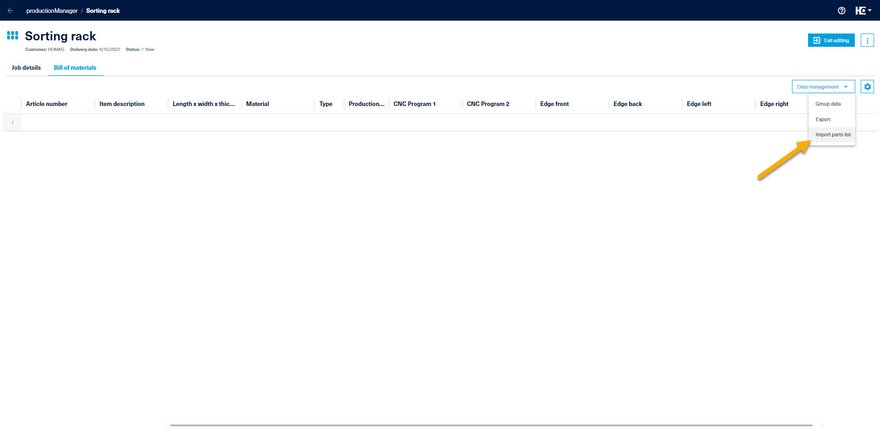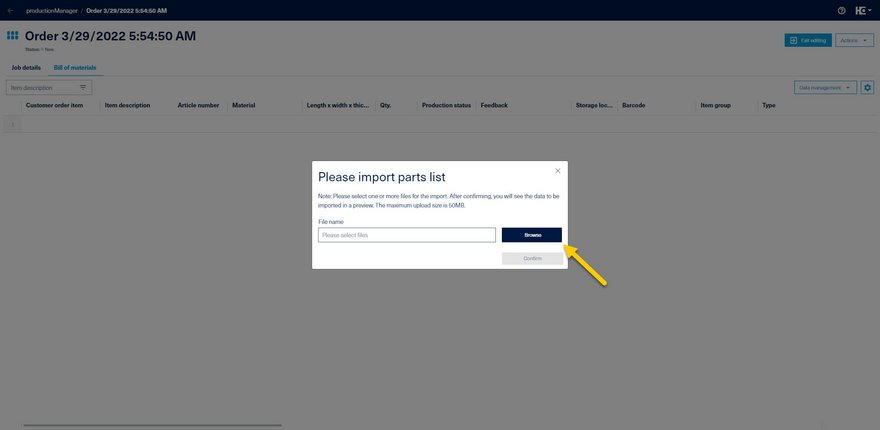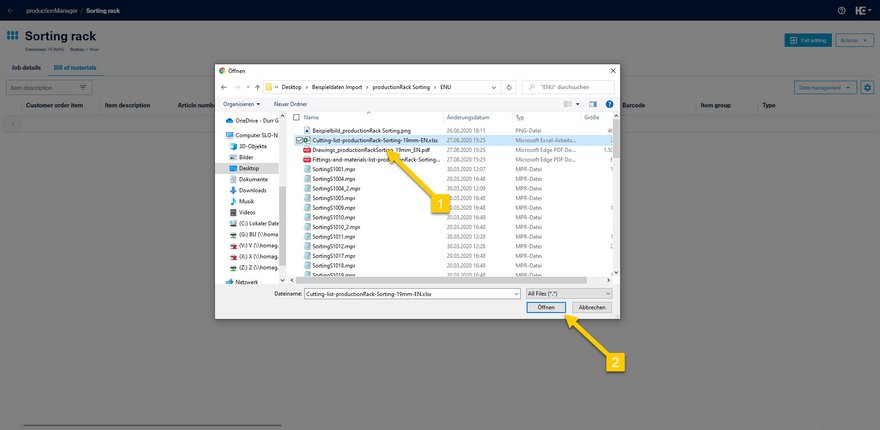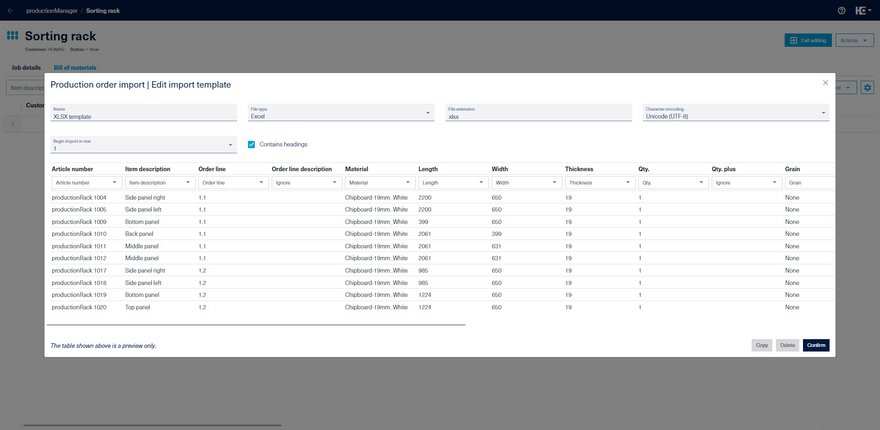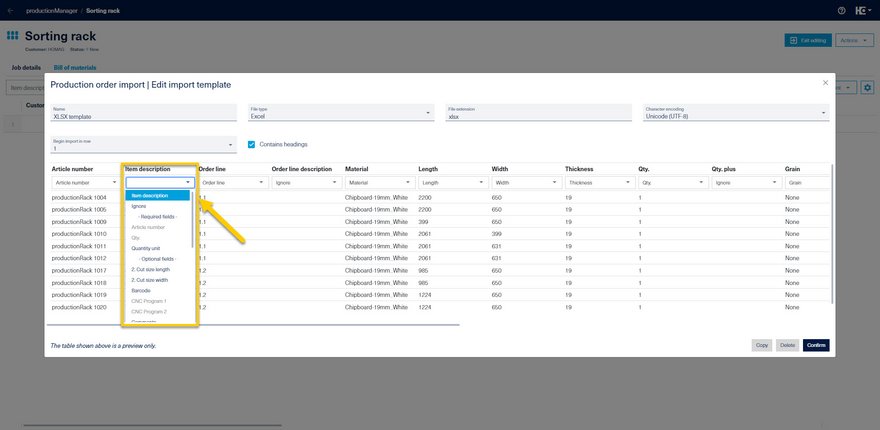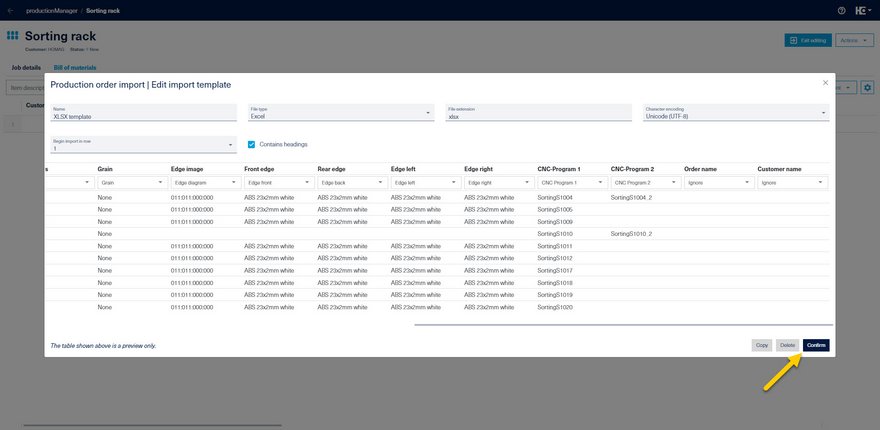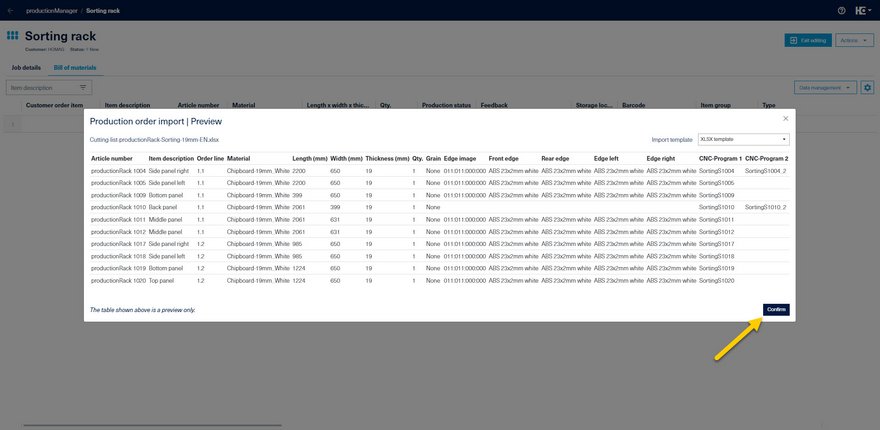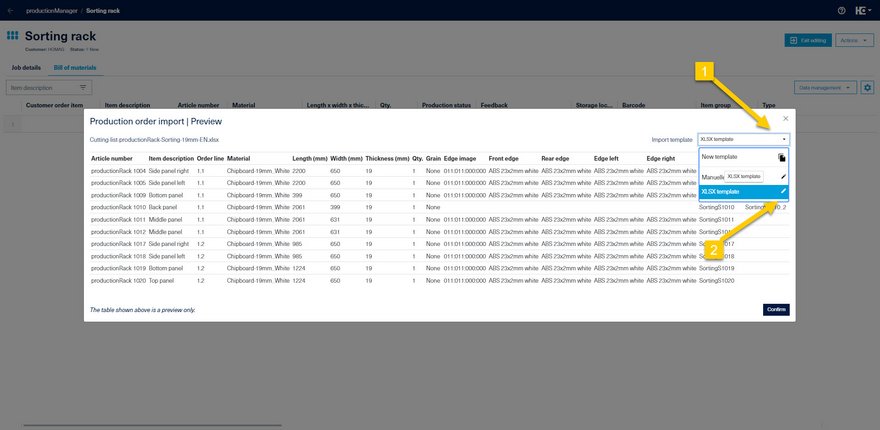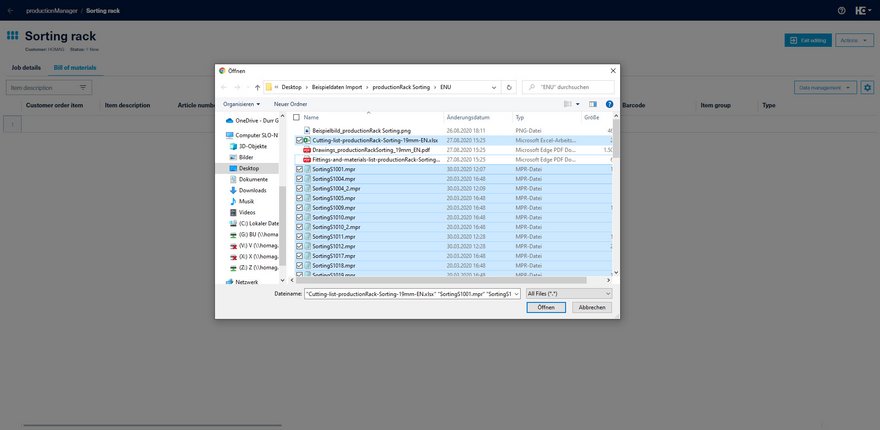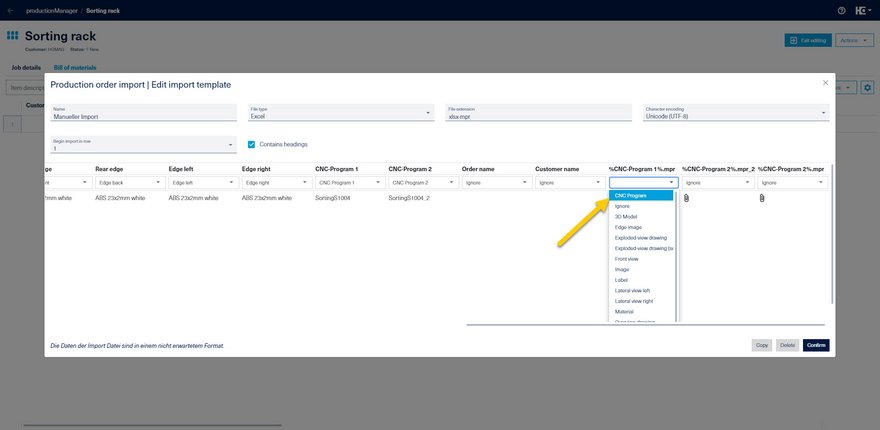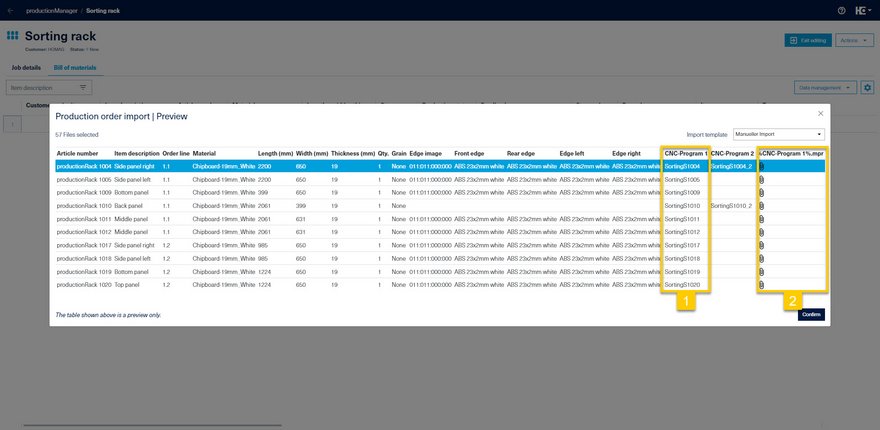Data import
In productionManager there are two basic ways to import data: the parts list import and the order import.
Usually, the orders and parts lists are created in an ERP or CAD/CAM system and must then be imported into productionManager.
When importing a bill of materials, order header data must be entered manually. When importing complete orders, the order header data is provided by the upstream system.
Import of a bill of materials
You start the configuration of the import with the import of the first parts list. Before that, the order header data and optionally the additional information should be entered.
Basically, the formats .csv, .pnx, .xlsx, .xls and .txt can be imported during the bill of materials import. The maximum file size of a file can be up to 50 MB.
During the first import, you must create an import template and perform column mapping. The mapping of the data elements is done once. Afterwards, productionManager remembers the assignment once it has been created.
You are also supported by productionManager during the mapping or the creation of the import template
The productionManager already recognizes many facts automatically during import. In this case, for example, that it is an Excel file with the file extension xlsx and the encoding is in Unicode (UTF-8) format.
Under Name you can choose any name you like. If the import function has recognized the file type incorrectly, you can change the type to CSV or PTX in the drop-down field. The encoding can also be switched under Format, e.g. to ISO code, ASCII or to a Japanese or Chinese font.
You can choose in which line the import should start (possible entries are 1 to 15). This option is important for customers whose system outputs the parts lists with additional information at the beginning of the list that is not needed for the calculation of the optimization solution.
By confirming Contains headings, the first line of the table to be imported is used as headings. If productionManager does not recognize these headings automatically or in the correct order, please add them using the respective drop-down fields.
Tip: If the column headings of the imported file match the names of the fields (link Fields of BOM), the columns will be assigned automatically.
After each assignment made, a preview for the column is displayed.
Once the mapping is complete, the configuration can be saved by clicking on Confirm.
Afterwards a preview of the first lines is displayed.
If necessary, the template can be edited again.
If the preview meets your requirements, the content can be imported by clicking Import.
Tip: You can also import additional data such as view and design drawings as well as images such as the edge image together with your parts list. You can find out more about this in the following section.
Import of lists with additional data
You can also import additional data such as view and design drawings as well as images such as the edge image together with your parts list.
In the import dialog for file selection, select all files to be imported at the same time. The easiest way to do this is to use the key combination CTRL+A. It is also possible to import a ZIP file containing these files.
The relationships between the list (.csv, .xlsx, etc.) and the naming of the additional files are automatically recognized.
In the example, the MPR files are named according to the values in the CNC Program 1 column (1).
The detected relation %CNC program 1%.mpr (2) is assigned the property Additional data: CNC program.
You can verify the assignment in the preview. After confirmation, the information is imported from the list and linked to the additional data.
The configuration of the import is necessary only once. When you run the import again, the preview for the import is displayed directly.

